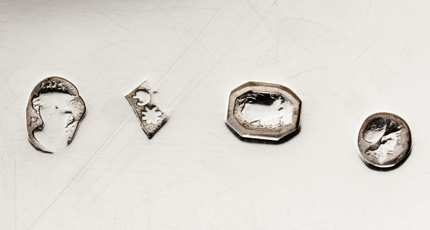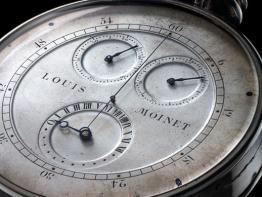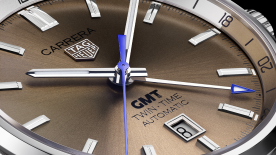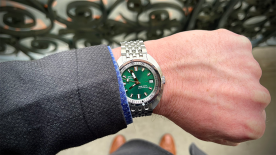The suspense was intact. Jean-Marie Schaller, CEO and founder of the Ateliers Louis Moinet had kept the secret of his discovery until exactly 1 pm on March 21st 2013. Many were aware that this was a man on a mission that he had set himself: restoring the name of the horologist Louis Moinet (1768 – 1853) to his rightful place at the top of the watchmaking pantheon. “Our research indicated that he was probably one of the most gifted watchmakers of all time”, said Jean-Marie Schaller. “We just lacked a specific discovery to prove it.”

WATCH THE VIDEO
This discovery now bears a name: the first chronograph ever invented. Many companies have battled over the paternity of this invention. A form of consensus had previously been reached, which set the earliest date at 1844, when a patent was filed by Adolphe Nicole. Today, the Ateliers Louis Moinet are presenting a model dated… 1816. The discovery, which is of major importance for the history of horology, will probably rewrite virtually all existing manuals and treatises on watchmaking history.
End of story? Far from it. This estimably valuable piece, which not only appeared 30 years earlier than what was believed to be the first true chronograph ever, also displays exceptional mechanical properties.
Louis Moinet, a man of both art and science, loved to indulge in astronomical observation. The latter has been a constant source of support for horological knowledge. Nonetheless, the 19th century was a watershed in that the technical progress that accompanied it afforded the possibility of ever more precise mechanical measurements.
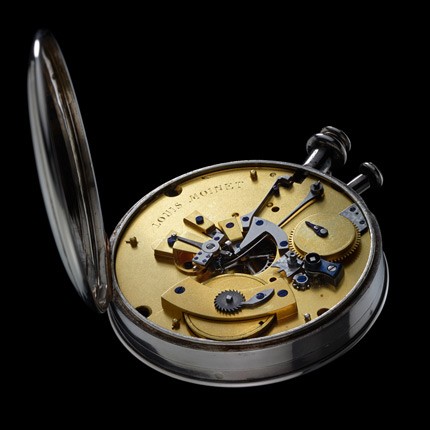
Like many of his peers, Louis Moinet was also engaged in this quest for precision – the difference being that he actually managed to achieve it! His 1816 chronograph is indeed precise to the nearest 60th of a second, meaning a rate of 216,000 vibrations per hour!
To put things in context, back in 1820 – meaning after Louis Moinet's invention – horologists just about managed to measure fifths of a second, and in some instances tenths of second. It was not until 1916 (a century later!), that Heuer, the man behind what would become TAG Heuer, exceeded this frequency and reached 360,000 vibrations per hour. The model from the Ateliers Louis Moinet therefore now establishes itself not only as the first chronograph in horological history, 30 years ahead of its nearest rival, but also as the first high-frequency horological instrument – except in this instance it was a whole century ahead!
As Jean-Marie Schaller recalls: “There was a strong supposition that this 60th of a second measurement had existed. We had found a trace of it in the Traité d'Horlogerie to which Louis Moinet devoted 20 years of his life and which was for decades the technical reference work in the field of horology. Most experts sensed hints of its existence behind mentions of Louis Moinet called a ‘compte tierce' and which we could now call a ‘compteur de tierces' (thirds timer), meaning the measurement of a second divided by 60. Nonetheless, we had never been able to lay our hands on a piece of evidence that demonstrated the physical reality of what had hitherto been a purely theoretical exploration. We now have this piece.”
Equipped with two buttons at 12 o'clock for stopping, starting and resetting, the Louis Moinet chronograph features an astoundingly modern design. It already displays a round shape with a large central hand and integrated subdials. From a technical standpoint, the watch has an approximately 30-hour power reserve, although this has not been tested, in order to avoid damaging the movement. It would nonetheless have been indispensable to Louis Moinet in using it during a complete astronomical revolution, meaning 24 hours. Finally, its dating, which will be the object of keen attention on the part of its potential detractors, is beyond doubt: it bears four hallmarks unequivocally testifying to the date when work on it was started (1815) and then completed (1816).
